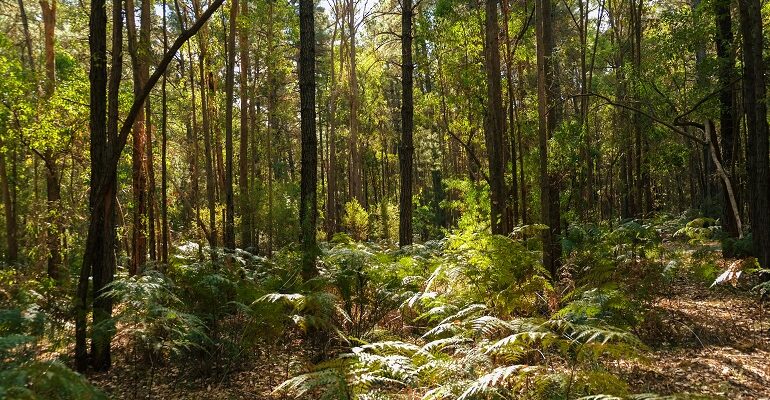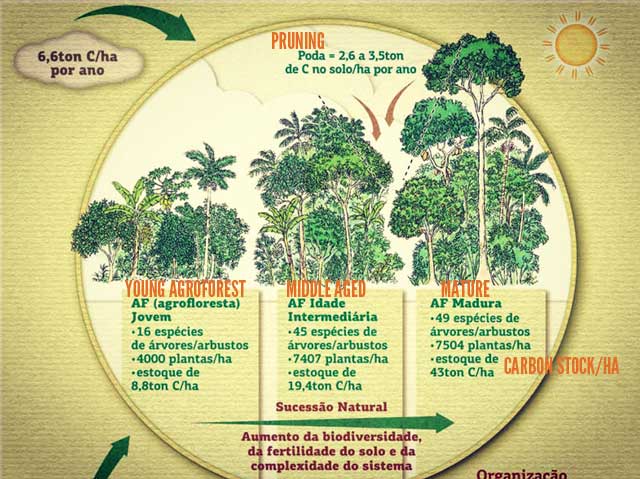Syntropic Agriculture: The Regenerative Food-Growing Method that Reverses Climate Change and End Hunger
February 6, 2023 2023-03-03 7:07Syntropic Agriculture: The Regenerative Food-Growing Method that Reverses Climate Change and End Hunger

Syntropic Agriculture: The Regenerative Food-Growing Method that Reverses Climate Change and End Hunger
Syntropic agriculture is an agro-forestry approach invented by Swiss-born Ernst Götsch, who was struck by the contrast between the poverty of cultivated fields and the opulence of the neighboring tropical rainforest during a vacation to the tropics in 1976. He discovered similar wealth as a result of how tiny farmers throughout the world have been doing agriculture for over a thousand years. They would plant trees alongside crops to boost biodiversity and improve soil fertility, resulting in increased yield. This is the total opposite of what traditional agriculture produces through monocultures and the application of herbicides, pesticides, and mineral fertilizers.
It is regarded as the regenerative food-growing system capable of reversing climate change and ending famine. Feeding the globe emits 17,000 megatonnes of CO2 into the sky each year, accounting for 47% of total global emissions, while leaving 795 million people, or 10% of the worldwide population, chronically malnourished. The Sustainable Development Goals 2 and 13, which talk about Ending Hunger and Climate Action, are an exciting call to help and give a complete rethink on how we produce and use food.
If a community integrates an agroforestry system, the CO2 sequestered by its plants might balance some of its CO2 emissions. Agroforests sequester around 10 tons of CO2 per hectare per year, according to Cooperafloresta Brazil (see image below): 6.6 tCO2/ha/yr from the air and 3.5 tCO2/ha/yr from pruning.

Today’s per capita CO2 emissions are 7,3 t CO2. However, in smaller towns, 4 tons per capita might be considered. There is no need to offset the remaining 2 tons because the emissions allowance will be 2 t CO2e/capita. An agroforest sequesters 10 tCO2/ha/year, which is comparable to the CO2 generated by 5 people/ha (or 500 people/km2) at 2 t CO2e/capita. To summarize, a tiny town with a population density of 500 people per km2 may fulfill the 2050 climate action objectives by introducing agroforestry without requiring its residents to change their habits or behavior.
Needless to note, the behavioral shift will occur in any case through agroforestry practice: people will consume organic, locally produced food, thus reducing their carbon footprint (agroforestry generates 40 tons of food per hectare per year!). Agroforestry in tiny, sparsely populated settlements might help fulfill climate goals and lead to carbon neutral (or carbon positive) lifestyle.
To urban planners, this appears to be heresy, since it appears to be a return to “urban sprawl,” a phenomena we’ve been combating for the past 25 years. However, it will not be comparable because
- the conditions are very different: people will work locally and/or remotely, consume less, travel less, and so on;
- compact cities will still exist; and
- “urban density” is similar to “fiscal austerity,” in theory a good idea but in practice not really getting us where we want to go.
Götsch’s syntropic agriculture replicates nature by producing its own fertilizer, producing an abundance of black soil and nutrients, retaining water and optimizing its circulation. An agroforestry site contains around 4kg of dry organic matter per m2 and is continually degrading. With more than 3 to 5 pruning, this equates to an expected output of 6-10 kg of mulch/m2/yr. The mulch absorbs carbon dioxide, protects the soil from erosion, and conserves water. Carbon held in trees is returned to the soil by pruning. A mature agroforest (ten to fifteen years old) contains a carbon stock of 48 tons per hectare.
A typical syntropic farm plan might look like the image below, with tree rows alternated with crop rows and rows that generate bio-mass for mulching.

Pests don’t exist in syntropic agriculture. Pests, it appears, prefer weak plants and should thus be seen as a sign of the plant’s health rather than a danger. The solution is to improve the plant’s health by strengthening it. Pests will then naturally vanish. However, there is little that can be done about birds devouring crops. “That’s life,” Götsch explains.
His performance is on par with his methods. According to the London Academy of Chocolate, he produces cacao beans of such high quality on his farm in Bahia (Brazil) that they sell for four times the market price to Italian Amedei, the world’s greatest chocolate manufacturer. “The quality arrives with the ecological equilibrium of the system,” says Götsch. Because his approach requires no inputs, he can manufacture cocoa at no expense. He also produces higher-than-average yields, and his crops are pest-free. His finest figures, however, come from his comparison of the energy efficiency of nature versus technology.
Thus, if effectively implemented, Syntropic Agriculture may restore ecological balance and potentially reverse climate change, dramatically modify urban architecture and the way food is produced and eaten, and achieve higher returns than traditional agriculture. Ending poverty and saving the world is humanity’s last chance.
Search

